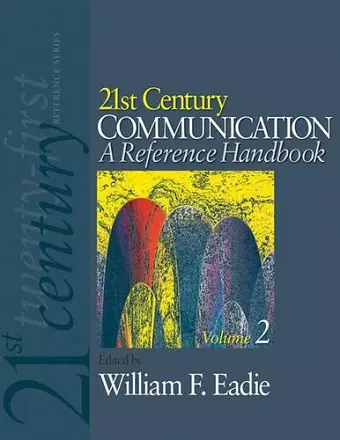21st Century Communication: A Reference Handbook
Format:Set / collection
Publisher:SAGE Publications Inc
Published:28th Jul '09
Currently unavailable, and unfortunately no date known when it will be back

The discipline of communication has grown in popularity from the time professors of journalism and speech decided, in the mid-1960s, that the term "communication" was an excellent general descriptor for the theory and research that each group aspired to create. Over time, the two groups grew closer and recognized significant overlap in their theoretical and research interests, but there were also differences in their traditions that kept them apart. While both groups agreed that communication is a practical discipline, journalism professors focused a great deal of their attention on the education of media professionals. Speech professors, on the other hand, often were more oriented to the liberal arts and valued the fact that communication could be approached from a variety of traditions, including the arts, humanities, social sciences, and even the sciences.
A key term in 21st Century communication, however, is convergence. Not only are media and technology converging with each other to produce new means of communicating, but individuals are increasingly using both new and existing communication tools to create new forms of communication. This convergence forces the various "camps" within the communication discipline to draw upon each other′s theories and research methods to keep up with explaining the rapidly changing communication environment. This convergence of ideas and theories provides a space to challenge conventional ways of thinking about the communication discipline, and that′s the goal of the SAGE 21st Century Reference Series volumes on Communication. General Editor William F. Eadie has sought to honor the diversity of the study of communication but also integrate that diversity into a coherent form, dividing communication study into four basic properties: 1) processes, 2) forms and types of communication, 3) characteristics to consider in creating messages, and 4) relationships between communicators.
Via 100 chapters, this 2-volume set (available in both print and electronic formats) highlights the most important topics, issues, questions, and debates any student obtaining a degree in the field of communication ought to have mastered for effectiveness in the 21st Century. The purpose is to provide undergraduate majors with an authoritative reference source that will serve their research needs going forward in this exciting field with more detailed information than encyclopedia entries but not as much jargon, detail or density as a journal...
ISBN: 9781412950305
Dimensions: unknown
Weight: 3150g
992 pages